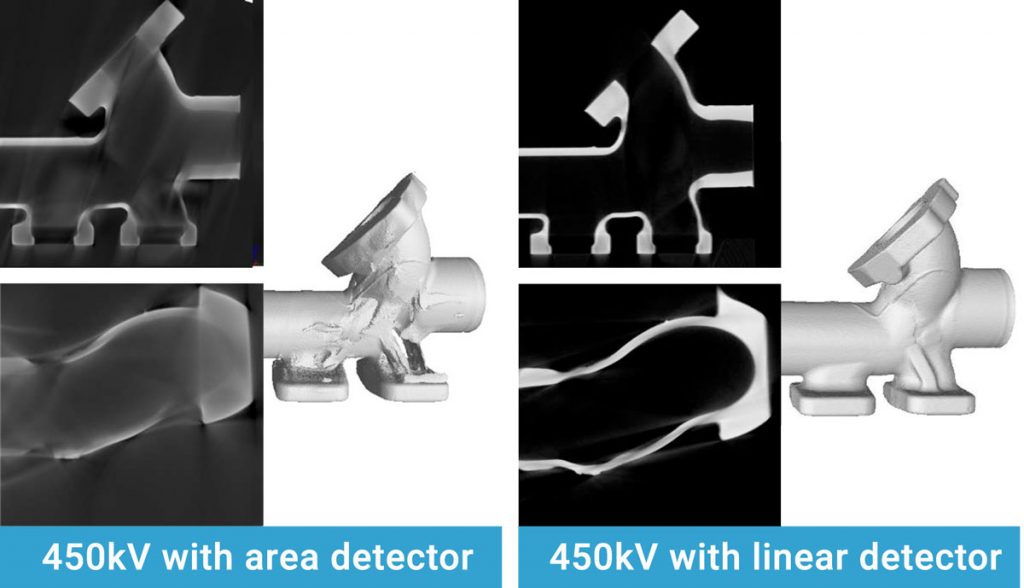Computed Tomography or CT (sometimes also called microCT) is an excellent tool for non-destructively examining components for defects such as cracks and voids. As such it is ideally suited to additive manufacturing with short production runs of often highly complex components. As the size and density of materials being examined increases, CT systems require more X-ray flux (or high kV) to penetrate the component.
Higher kV examinations of dense materials are also complicated by scattering effects which can blur or smudge edges making quality determinations more difficult. This can be overcome by optimised detector selection.
CT systems like the Yxlon Comet UX50 can usually be specified with an area detector and/or a linear detector. Linear detectors come into their own, when performing high-kV scans. In such scenarios they produce much higher resolution images building up full images on a pixel line by pixel line basis. Although scan times are increased, the image quality and hence the ability to detect defects speaks for itself.

Using a linear detector also provides an extra degree of freedom in terms of sample height. With taller specimens, the system just keeps scanning and is only limited by the length of travel of the detector.
Using a liner detector is also advantageous when scanning components made from numerous materials of differing densities. Under these circumstances maintaining sharp edges allows you to more easily discern boundaries between individual parts of differing densities. This demonstrates how linear detectors are not only the best choice for large, dense components, but also ideal for systems requiring versatility encountering a wide range of materials.

